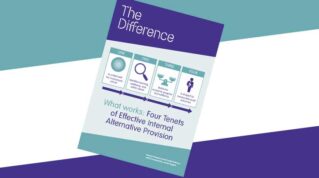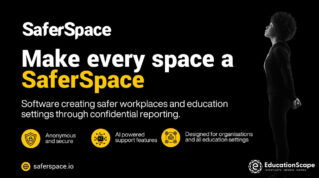As students progress through their education, they’re often asked to consider what they want to be when they grow up. For some, this is an easy question to answer. Many young people with privilege have generational role models of careers and networks, are able to attend work experience or get help from knowledgeable teachers to work out a clear career roadmap.
But for many others, the answer is not so clear. They may not know what they want to do and may not even be aware of all the options available to them, let alone the qualifications and skills required to pursue them. This lack of awareness is particularly acute for students from under-represented backgrounds.
Invisible to whom?
Invisible careers are professions that are not widely known, talked about, or understood by certain groups of students. For example, careers in STEM are often overlooked by girls. This can be due to a lack of resources in schools or even systemic bias about who can succeed in these fields (such as the idea that boys are better at maths). Careers in creative industries, such as animation, software design and game development are equally little known or understood by students who do not have access to relevant information or resources, or who face systemic barriers.
Under-represented students are those who find it most challenging to access these invisible careers, and identifying who they are is an important first step in addressing the issue. Data collection and analysis can help to identify them and to provide them with targeted support to access these career options.
Addressing bias and privilege
Like everyone else, teachers have unique experiences and perspectives that shape their biases. While some are beneficial and help them to connect with and understand their students better, some may be harmful. Teachers may not intentionally discriminate against certain students, but their unconscious biases can still impact the way they perceive and interact with them and the career advice they deliver. Their own experiences can also impact their understanding of possible jobs, what employers expect and what Gen Z wants from the world of work.
By understanding unconscious bias and its impact, teachers can work towards creating a more inclusive classroom environment. This is an ongoing process that’s not at all about blaming or shaming teachers but entirely about empowering them to better support their students to understand the options open to them.
Promoting diversity in the curriculum
Promoting diversity in the curriculum is another important way to make invisible careers visible to all pupils. This can include highlighting the contributions of people from diverse backgrounds in different fields.
Equally, exploring the role that diversity plays (or fails to play) in different industries not only makes the curriculum more engaging and relatable but also challenges stereotypes and provides pupils with a more realistic and accurate view of the world of work – one they can feel emboldened to change.
The importance of role models
Having visible role models can be a powerful way to inspire and motivate students, allowing them to envision themselves in that same role or as a pioneer in another field.
However, it’s important to ensure that these role models represent a diverse range of backgrounds. This includes people from different ethnic, cultural, and socioeconomic backgrounds, as well as those living with disabilities or who identify as LGBTQ+. These characteristics are all part of our students’ lived experiences, and none should be left to stand as a barrier to their progress.
Making invisible careers visible to all pupils requires a multifaceted approach that addresses bias, privilege and the needs of under-represented students. By creating dynamic and engaging conversations about work, teachers can break down the barriers under-represented students face and open doors to a vast array of career options.
At a time of deep skills shortages affecting many sectors, we simply can’t afford to keep excluding so much talent from so many industries by keeping them hidden. We never could, but now it’s time to consider what we want our economy to be when it grows up.














Your thoughts